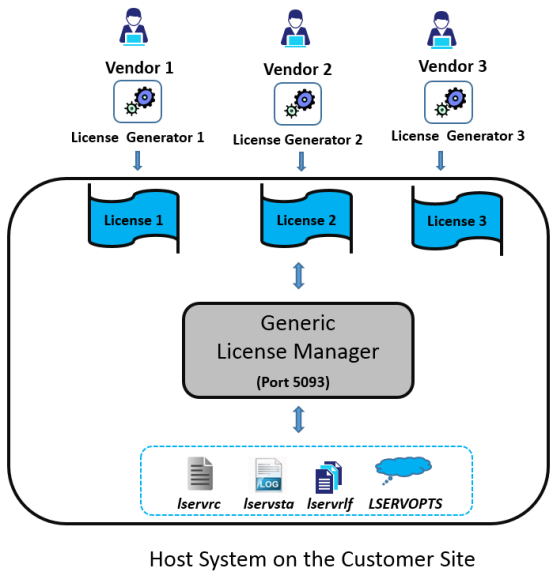A Use Case for Isolated License Managers
The below diagram illustrates a customer site deployment scenario without isolated License Managers:

Figure 1: Multiple Clients Accessing the Sentinel RMS License Manager
Here, all the Sentinel RMS licensed applications deployed in the network share the same License Manager. As a result, they will end upon having a common license file, usage log, redundant configuration file, and the same environment variable settings.
The environment variables set on a host influence all of the licensed applications, regardless of software vendor. This can be quite problematic when a new software installation overwrites any existing settings. These changes to configurations and paths can inadvertently affect another software vendor’s applications—increasing burden to the system administrator’s task of either maintaining multiple hosts or dealing with overlaps.
The usage logs can also contain intermixed data, requiring data to be filtered out from each software vendor before software vendor specific usage reports can be generated. This can be a serious bottleneck when customers need to send the application usage data back to the software vendor for analysis and billing. Many organizations also need to comply with privacy laws that prevent usage data sharing for different software vendor’s software.
Additionally, when a software vendor implements any form of customization to the License Manager (such as when a custom locking routine is implemented), then that may be lost if a generic License Manager is installed on the system, overwriting the customized one.
To resolve such problems, a software vendor independent License Manager—termed as an isolated License Manager—can be deployed on a host. An isolated License Manager can coexist with a generic License Manager and other isolated License Managers on the same host. This simplifies deployments and provides a hassle-free software vendor-specific environment.
